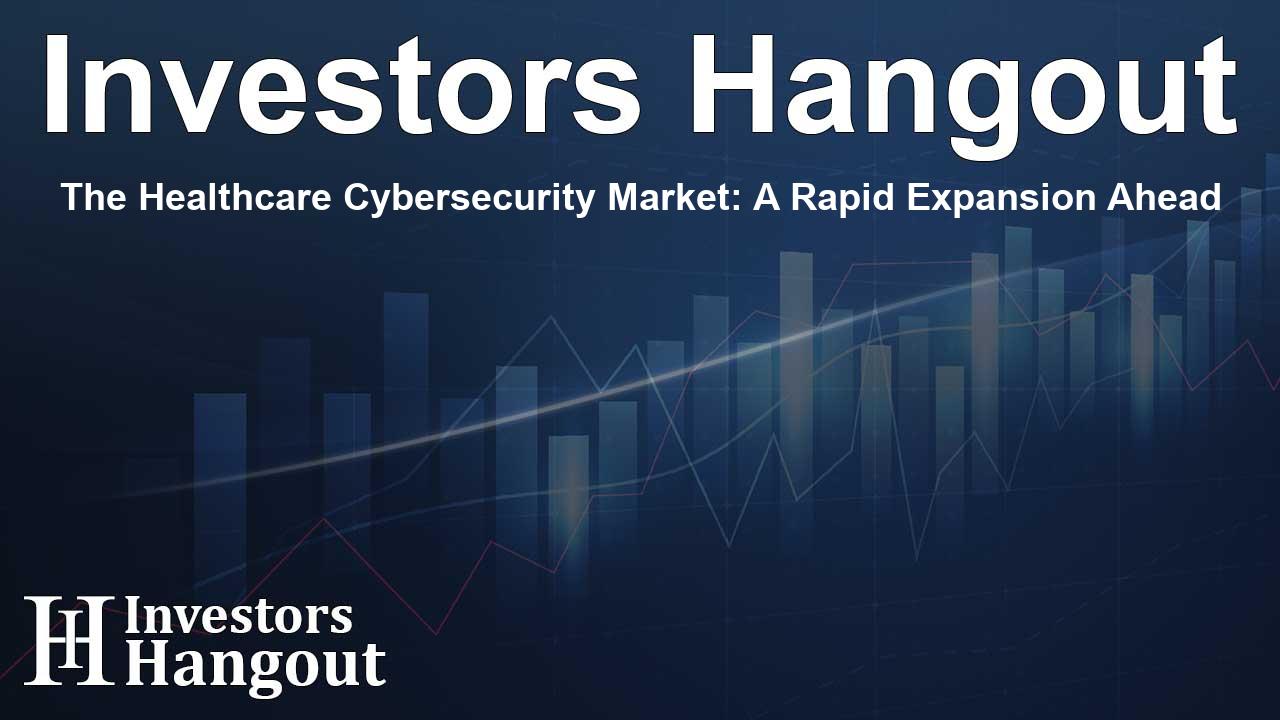The Healthcare Cybersecurity Market: A Rapid Expansion Ahead

Understanding the Surge in the Healthcare Cybersecurity Market
The healthcare cybersecurity landscape is evolving rapidly, having been valued at US$ 21.25 billion recently, and is anticipated to soar to an impressive US$ 82.90 billion in the coming years. This notable growth trajectory, which implies a compound annual growth rate (CAGR) of 18.55%, is largely attributed to escalating cyber threats and ongoing innovations in cybersecurity measures.
Rising Threats to Healthcare Cybersecurity
A staggering 137% rise in ransomware attacks targeting healthcare institutions over the last year has put cybersecurity at the forefront of healthcare concerns. The advent of new regulatory requirements, particularly those from the FDA, regarding premarket cybersecurity adds to the urgency for secure systems within healthcare settings.
Key issues have emerged within the industry; security for medical devices has become a major concern, with 68% of Internet of Things (IoT) healthcare devices operating on outdated systems. This situation is compounded by revealed statistics showing that 42% of healthcare professionals still share passwords, which poses significant risks to patient data and system integrity.
Healthcare-Specific Solutions in High Demand
In light of these challenges, the market for healthcare-specific cybersecurity solutions has burgeoned, presenting an estimated serviceable available market worth $3.2 billion. Managed Detection and Response (MDR) services have witnessed the fastest growth rate, increasing by 89% year-over-year.
Major corporations like Palo Alto Networks have been making strategic acquisitions—such as the purchase of the medical device security startup Zingbox—to bolster their cybersecurity offerings. Moreover, Microsoft has devised healthcare-centric applications within its Azure platform, which significantly enhances security across Epic Electronic Health Record (EHR) implementations.
Market Segmentation and Insights
The healthcare cybersecurity sector is characterized by certain disparities in adoption and deployment. Academic medical centers show a significant lead with 78% utilizing AI for anomaly detection, while only 29% of community hospitals have the ability to monitor medical device traffic effectively.
The competitive arena consists mainly of major platform providers like Cisco, securing a substantial portion of the healthcare infrastructure, and specialists like Claroty, whose medical device security solutions have seen 140% growth in hospital deployments last year. However, challenges abound, especially for legacy vendors, as they face difficulties adapting to modern security needs.
Trends Shaping the Future of Healthcare Cybersecurity
Several trends are emerging as differentiators in this market, notably the integration of regulatory automation and clinical context awareness. Tools that streamline regulatory compliance, such as ServiceNow's HIPAA workflows, have notably reduced the time required for audit preparations significantly.
Meanwhile, organizations like Armis have pioneered context-aware security that reduces false alerts by mapping medical devices to electronic health records. Nonetheless, clinical workflow disruption remains a major concern for 61% of healthcare organizations, which often hinders the adoption of advanced security solutions.
Key Drivers and Challenges
The healthcare cybersecurity market is propelled by several key factors including rising ransomware attacks, stringent regulatory compliance requirements, and an increased reliance on telehealth and IoT devices that have expanded the potential attack surfaces.
Despite these drivers, various obstacles challenge the sector, like the precarious state of legacy systems that present exploitable vulnerabilities, a shortage of qualified cybersecurity professionals, and the substantial financial burden that advanced cybersecurity frameworks impose on healthcare entities.
Cloud and Endpoint Security: Crucial Areas of Focus
As healthcare organizations increasingly migrate to cloud services, the security surrounding these operations is paramount. Alarmingly, a significant majority of security breaches stem from misconfigurations or overprivileged access to cloud resources. Providers are now transitioning towards more robust security postures that address these gaps, with a noticeable rise in the utilization of Cloud Security Posture Management (CSPM).
Additionally, connected medical devices are an area of rising vulnerability, which has become evident as many devices operate on unsupported software, putting healthcare networks at risk. Solutions such as network segmentation and AI-driven network detection are becoming vital tools to mitigate these challenges.
Conclusion: The Path Forward for Healthcare Cybersecurity
The future of healthcare cybersecurity appears both promising and challenging. As organizations embrace advanced technologies and heightened awareness of security needs, the market is set for rapid growth. However, continuous adaptation and innovation will be crucial as threats evolve.
Frequently Asked Questions
What is driving the growth of the healthcare cybersecurity market?
The surge in ransomware attacks and new regulatory requirements are key factors propelling growth in this sector.
What are the main challenges facing healthcare cybersecurity today?
Legacy systems, skilled workforce shortages, and high costs of robust security solutions are significant challenges.
How is cloud security impacting healthcare organizations?
Many healthcare organizations are migrating to the cloud, yet a large percentage of breaches are caused by configuration issues and improper access controls.
What solutions are emerging in the healthcare cybersecurity landscape?
Emerging solutions include AI-driven threat detection, enhanced regulatory compliance tools, and advanced endpoint protection measures.
Who are the major players in healthcare cybersecurity?
Major companies include IBM, Cisco, Palo Alto Networks, and others leading the innovation in healthcare cybersecurity measures.
About The Author
Contact Kelly Martin privately here. Or send an email with ATTN: Kelly Martin as the subject to contact@investorshangout.com.
About Investors Hangout
Investors Hangout is a leading online stock forum for financial discussion and learning, offering a wide range of free tools and resources. It draws in traders of all levels, who exchange market knowledge, investigate trading tactics, and keep an eye on industry developments in real time. Featuring financial articles, stock message boards, quotes, charts, company profiles, and live news updates. Through cooperative learning and a wealth of informational resources, it helps users from novices creating their first portfolios to experts honing their techniques. Join Investors Hangout today: https://investorshangout.com/
The content of this article is based on factual, publicly available information and does not represent legal, financial, or investment advice. Investors Hangout does not offer financial advice, and the author is not a licensed financial advisor. Consult a qualified advisor before making any financial or investment decisions based on this article. This article should not be considered advice to purchase, sell, or hold any securities or other investments. If any of the material provided here is inaccurate, please contact us for corrections.
